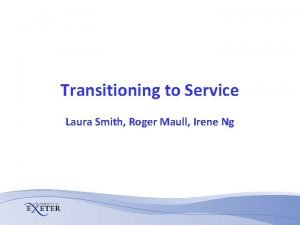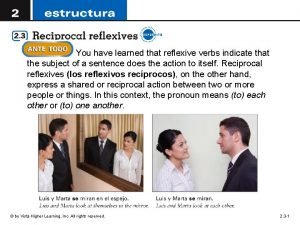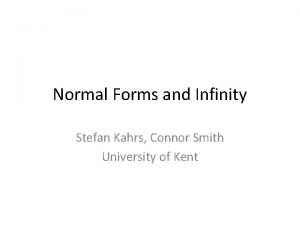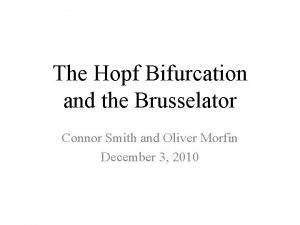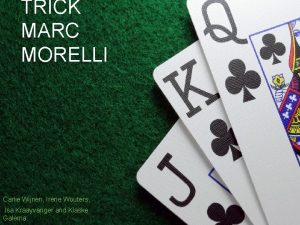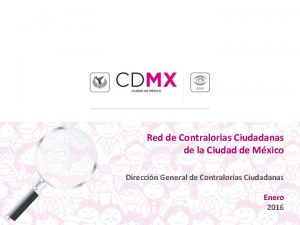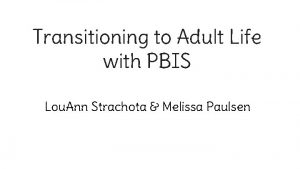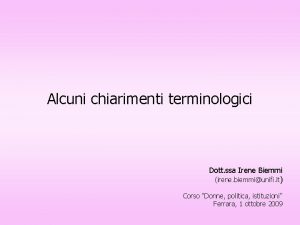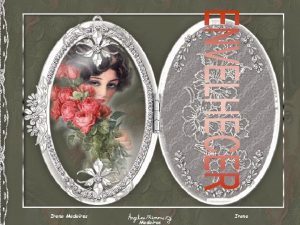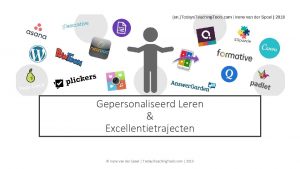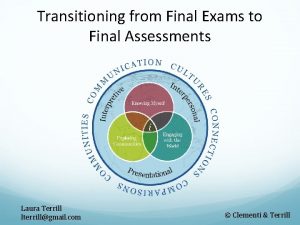Transitioning to Service Laura Smith Roger Maull Irene












- Slides: 12

Transitioning to Service Laura Smith, Roger Maull, Irene Ng

Background • Changing nature of the economy and competition has resulted in the ‘servitization’ of manufacturing. • Neely (2008) shows that servitization is not always a profitable strategy as it requires a fundamental change in value proposition and supporting business model • Literature is calling for an investigation into the operational implications of servitization (e. g. Pawar et al. , 2009; Johnstone et al. , 2009; Oliva & Kallenberg, 2003 ) • This presentation will show findings from an exploratory study on value propositions in servitization and their implications for operations management.

Product-Service Systems (PSS) • PSS represents combinations of product and service offering observed in the product to service transition. • Baines et al (2007) PSS is “an integrated product and service offering that delivers value in use” • PSS in management literature has observed motivations and categories (e. g. Tukker, 2004) • OM discusses the challenge of seeing value through the eyes of the customer and designing and managing PSS operations accordingly (Johnstone et al, 2009; Pawar et al, 2009; Brady et al. , 2005).

S-D Logic - Value Creation • PSS traditionally takes a GDL view of value e. g. Tukker (2004) suggests ‘added’ value through service makes the client willing to pay more • Lapierre (1997) show that value created during exchange transactions represents only one level of the service value proposition, a second level is created in use. • General consensus is that customer value is inherent in use, is perceived by the customer and is the result of a trade-off (Woodruff, 1997). • Therefore, value can only be proposed to the customer by the provider and co-created in use (Vargo & Lusch 2004: 2008)

Case Design Research Questions: • What PSS value propositions are offered in the P-S transition? • What are the implications of PSS value propositions for operations design? Case Study: • UK OEM supplying durable capital equipment and service • service revenue has grown by three times in a decade and over 50% in the last five years • Servitized offerings characterised by whole-life support; availability performance indicators; Price-per-unit of equipment use; full, partial and non- ownership options • Data – 28 interviews with customers and employees, 5 years of ERP data, process documentation

P-S Attributes Value Proposition Attributes Asset • Asset Performance Recovery • Query Resolution • Concessions • Equipment Repair Service Availability • Equipment Maintenance Service • Parts Forecasting & Provision • Through-Life and Obsolescence Planning • Capability Planning • Equipment Operating Advice Outcome • Advice for operational and contextual capability


Design of Service System • Technical complexity, this includes the complexity of the task, the knowledge required to do the task and the range and variety of the tasks • Discretion, this includes the workers element of choice and their ability to exercise judgment in carrying out a task. • • • Series, Parallel, Specialisation Top Down Bottom Up

Service Design

Research Propositions • As a firm transitions from product to service (P-S) contextual use variety increases. • Resources to absorb or attenuate contextual use variety in P-S are both customer and firm human resources • Delivery of availability and outcome value propositions requires customer resource integration • P-S value propositions are interdependent • Service process design varies according to the PSS value proposition(s). Lower level propositions have a more structured process design than higher level propositions.

Summary • • P-S transition is complex Firms looking to ‘add value’ cannot treat service as a bolt-on Value propositions are interactive they cannot be optimised discretely P-S transition increases variety in the provider system

Thank you…
